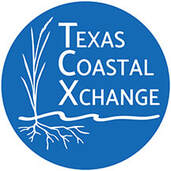1000-Mile Living Shoreline Project
TCX is designing a 1,000-mile living shoreline along the Texas coast to protect these wetland areas against the erosive forces of coastal winds and the sea level rise resulting from climate change. The end goal is a nature-based structural support and adaptation mechanism for salt marshes along the Texas Gulf Coast. By protecting these wetlands with constructed oyster reefs and similar breakwaters, these wetlands will have a chance to maintain and expand with sea level rise, saving millions of tons of carbon stored in their soils while continuing to sequester carbon dioxide for decades into the future.
To identify the best locations along the coast for the construction of living shoreline projects, TCX asked Sustainable Planning and Design to conduct a suitability analysis with a weighted overlay using Geographic Information System (GIS). This analysis examines a variety of metrics: proximity to Texas Bays, land ownership, shoreline protection suitability as determined by the Harte Research Institute (HRS), important Whooping crane habitat, salt marsh presence, development, oyster suitability, and future sea level rise. The results from this analysis are explained in the report below, as well as an online interactive map that identifies candidate shoreline along the Texas coast ideal for living shoreline protections.
To identify the best locations along the coast for the construction of living shoreline projects, TCX asked Sustainable Planning and Design to conduct a suitability analysis with a weighted overlay using Geographic Information System (GIS). This analysis examines a variety of metrics: proximity to Texas Bays, land ownership, shoreline protection suitability as determined by the Harte Research Institute (HRS), important Whooping crane habitat, salt marsh presence, development, oyster suitability, and future sea level rise. The results from this analysis are explained in the report below, as well as an online interactive map that identifies candidate shoreline along the Texas coast ideal for living shoreline protections.
The next phase of the project involves working with BCarbon, a nonprofit carbon dioxide credit registry created from the work of a Rice University- Baker Institute stakeholder group. BCarbon will create a methodology for awarding living shoreline carbon credits. The carbon credit trading market will provide the means to fund the shoreline project, award corporations with nature-based carbon credits, and provide a financial incentive to local landowners to allow the inland migration of wetlands.

